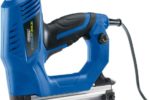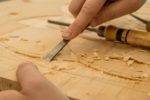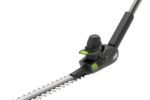The Benefits of Using a Handheld Reciprocating Saw

Let’s be real – there’s nothing quite as satisfying as tearing through a project with a handheld reciprocating saw. It’s like a power tool version of Thor’s hammer – mighty, powerful, and oh-so-satisfying to wield. But beyond the sheer joy of using one, there are actually some serious benefits to having a handheld reciprocating saw in your arsenal.
From its versatility to its ability to reach tight spaces, this saw can do things other power tools can only dream of. So, grab your safety glasses and prepare to be convinced – after reading this article, you’ll wonder how you ever got by without a handheld reciprocating saw in your tool collection.
The Power of the Tool that can Make “Cutting” Easier
You know what they say, the right tools can make a huge difference in the execution of a project. Sure, you can make do with anything laying around the house but if you’re serious about the job you need to invest in professional tools, and nothing screams out ‘professional’ like a handheld reciprocating saw.
A reciprocating saw is a tool that uses force to rapidly push and pull its blade to rapidly cut various materials. It’s usually operated by an electric motor, although petrol-powered variants exist too. It’s basically a tycoon among saws – its small size and power allows it to cut through almost anything, including nails, stainless steel, drywall and a whole lot more. It’s even capable of cutting into difficult-to-reach areas, so you’re sure to get the job done with no wasted time.
Now, if you’re a newbie, you’re probably a little intimidated at using a reciprocating saw. No worries – they are extremely safe and easy to operate with a few tips. Firstly, don’t be afraid to stand your ground and make sure the saw is firmly held. Make sure the material you’re about to cut is securely clamped down and in a stable surface. Now here’s the trick, slowly guide the saw towards the material making sure to keep steady and even pressure – don’t worry if you feel a little resistance. Let the saw do the work, let it do its thing. And lastly, make sure to wear protective gear and be safe.
Now don’t get me wrong, a reciprocating saw isn’t just for the construction site. It’s one tool you’ll want to have around the house in case you need to work on some DIY projects. So what are you waiting for? Get yourself a handheld reciprocating saw and you’re all set. See, cutting is made easier with the right tools!
The Reciprocating Saw
You might be wondering what a reciprocating saw is; well, it’s a saw that uses a reciprocating motion to cut through objects, such as wood and metal. It’s a powerful and efficient tool that can help you get the job done quickly, without the need for extra help.
Basically, the reciprocating saw has a motor, which powers the blade. The blade is connected to the body of the saw and held in place by clamps. When the motor is turned on, the blade vibrates in a reciprocating pattern and cuts through the material.
Since the blade vibrates so quickly, the reciprocating saw is much faster than traditional saws. This is why it’s perfect for tough jobs, like cutting through metal or tough wood. It can also be used to make curved or irregular cuts, which is not possible with other saws.
Of course, like any saw, the reciprocating saw can be dangerous when not used properly. It’s important to use safety glasses, gloves, and a dust mask when operating a reciprocating saw, as the sawdust and debris can be hazardous to your health. You should also ensure that the cord or battery is unplugged when changing or adjusting the saw blade.
In conclusion, the reciprocating saw is a powerful and efficient tool that can make cutting easier. It’s important to use the saw safely and to ensure that the blade is in good condition before using it. So, if you need to get the job done quickly and efficiently, then this is the tool for you.
How to Use the Saw
Hello, today I’m here to teach you everything you need to know about using a reciprocating saw. Now these tools are a bit intimidating at first but with a few tips and tricks, you’ll be cutting and slicing like a pro in no time.
First off, you’ll need to make sure you have the right blade for what you’re cutting. There are a wide range of blades designed for different materials such as metals, woods, and plastics. Once you’ve selected the right blade for the job, attach it securely.
Once your saw is properly set up, it’s time to get to work. Position the blade at the end of your cut and push the trigger to start the saw. From there, you’ll want to stick with a slow and steady pace while cutting keeping the blade firmly on the material.
When using a reciprocating saw, it’s important to be mindful of where your hands are. You’ll want to make sure you keep them away from the blade at all times. As the saw moves, it will produce a lot of dust and pinched materials, so wear safety glasses and hearing protection to protect yourself from injury.
Once your cut is finished, you’ll want to turn the saw off and allow it to stop completely before removing it from whatever material you were cutting. This will help ensure that your blade stays sharp and is not damaged in the process.
And there you have it! All the tips and tricks you need to know about using a reciprocating saw. With a few practice runs, you should be cutting and slicing materials like a pro in no time! Until next time, happy sawing!
Safety Tips for Use
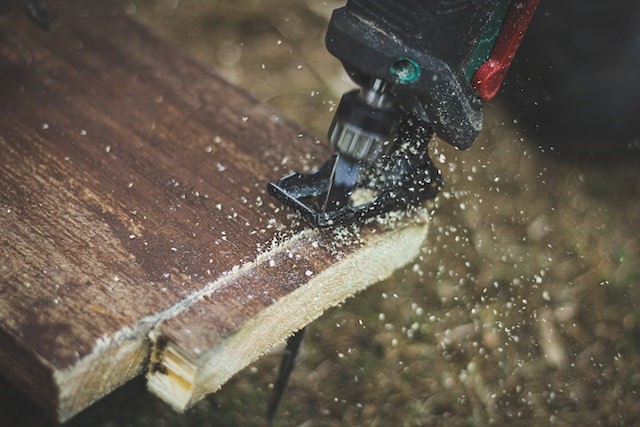
For those of us who love to tinker or take on a DIY project, a reciprocating saw must be in our tool box! But before you go ahead and start sawing away, it’s important to remember some safety tips and prevent any nasty accidents. So, what are some things to look out for when using a reciprocating saw?
Well, for starters, and this might be some common sense, always pay attention to what you’re doing and make sure you wear the right clothing and safety gear. It may not be the most stylish look, but it will certainly make your life easier in the long run.
Additionally, when using a reciprocating saw, keep it away from flammable materials such as paints and thinners, as sparks generated from the saw may cause a fire. Don’t leave it in an open, exposed area where children or pets can get to it, as those jumping blades can be hazardous. Also, always remember to unplug the saw after each use.
It’s true that a reciprocating saw is incredibly efficient and reliable, but it does come with a certain level of danger. If you’re working on a project for the first time, it’s always a good idea to get help from an experienced hand. A friend from the local hardware store or someone from the work site could go a long way in helping you get the job done.
These simple tips should help you remain safe when using a reciprocating saw. If you ever have any doubts or questions regarding safety, it’s best to refer to the manufacturer’s guide. Basic safety principles remain the same no matter what the job is; so stay vigilant, stay safe, and metal cut away!”
No Need for Extra Help with Your Handheld Reciprocating Saw
Ahhh the amazing reciprocating saw. Never has there been such a multi-purpose machine that has the power, the ability and the ease to cut through pretty much all substances. You no longer have to take the time and trouble to hire an extra pair of hands or call up Jimmy to help you out in the middle of your DIY projects. All you need to get the job done, are your two hands and a handheld reciprocating saw!
Portability and light weight is the name of the game when it comes to handheld reciprocating saws. All you need to do is take the saw out of its box, assemble the stand and get to slicing. You don’t need to worry about any heavy lifting, as the saw is so light you can easily move it around with you, plus it doesn’t take up much space so you always have the freedom to work wherever you please.
But do not let the small size fool you. While the saw might be small, it packs a lot of punch. It is capable of performing multiple tasks, from cutting through wood and metal, to grinding and polishing. Anything that needs cutting, the handheld reciprocating saw can definitely help you out.
Another great thing about the reciprocating saw is the fact that it has many different types of blades available for different purposes. You can get different blades for different tasks, like diamond blades that can easily cut through tiles, ceramic, and other hard surfaces; a steel blade for taking down walls and posts; and a carbide blade for hacking through tree roots and other tough stuff.
There are also plenty of accessories available for the reciprocating saw, such as an adjustable depth gauge and speed controls which can help you get the job done faster. So if you are looking for an all-in-one solution to all your DIY requirements, you need to look no further than the amazing reciprocating saw.
Portability and Light Weight
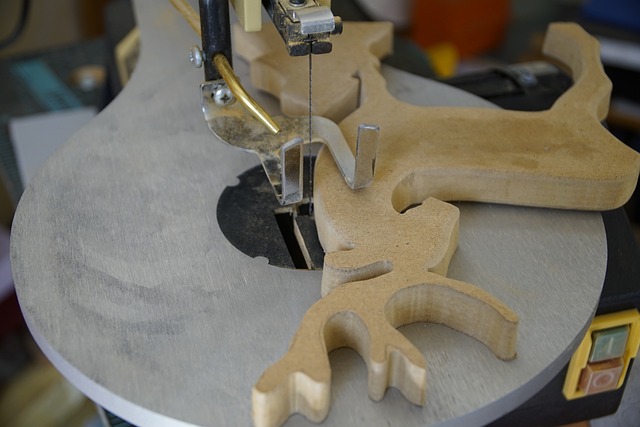
If you’ve ever had the misfortune of having to tote around a large, bulky power saw, then you know how much work it can be. Heavy and awkward, it can be quite the chore! But no more with the handheld reciprocating saw.
The handheld reciprocating saw is lightweight and easy to take with you wherever you go, so whether you’re heading off to do some tree pruning or going to your friend’s house to help them with a project, you can easily carry your saw with you in one hand. This is the kind of convenience you only get with the reciprocating saw — no more calling your buddies at the last minute to help you get the saw in and out of the car. And with its ergonomically designed handle, you don’t have to worry about getting tired from lugging it around.
Plus, the saw is so lightweight you can even manage it with one hand. With the normal drilling, sawing, and cutting tools, you need at least two hands to operate them, but with the handheld saw you don’t need an extra pair of helping hands. This makes it particularly useful when you need to operate the saw in tight spaces — it’s easy to maneuver into any cramped area.
The reciprocating saw is even great for those complex renovations requiring sections of plumbers, electricians, and roofers. With a regular saw it’s an enormous pain to move it around in all those aisles, but the portability of the handheld saw makes it a breeze. It’s a great option for those who are trying to do a project on a limited budget.
Do yourself a favor and get one of these amazing tools! No more carrying heavy and unwieldy tools, no more causing a fuss about transporting them. You can just grab the saw and go, like a magical genie. Sure beats toting around that bulky power saw.
Multi-functionality
Yeaaaaahhhh! Can I get an amen for the multi-functionality of a handheld reciprocating saw! I know it’s time for a ‘pat on the back’ for all of my sawing folk out there! This tool is like a mini-jack-of-all-trades and it really comes through in handy when the occasion arises.
Not only can you use a handheld reciprocating saw for the basic cutting of larger objects like timber, but you can also depend on it to take on more complex tasks like cutting curves or following a pattern. In other words, it can got all the moves! Many brands also feature adjustable blades that can be changed for various sizes and styles of cuts. In addition, you can even get blades that are specialized for your particular job. Now if that isn’t the bee’s knees then I don’t know what is. You’ll be cuttin’ with precision and speed in no time.
The versatility doesn’t end there because with a handheld reciprocating saw you can take on a range of precision tasks as well as larger projects. You’re not limited to simple straight sawing either; with the right blades, you can saw into tight corners and intricate shapes. You can even choose to get attachments like extension reach blades so you can reach areas that are difficult to access.
Now, with all this multi-functionality you may be thinking that using a handheld reciprocating saw takes a bit of expertise; however, this isn’t the case. As it’s relatively lightweight and easy to control, so even rookies can become sawing masters in no time.
So don’t forgo functionality for power, this tool is powerful and multi-functional and can’t be beaten! So come on now, let’s get sawing! Yeaaaaaaahhhh!
A Wide Range of Choices for Your Reciprocating Saw
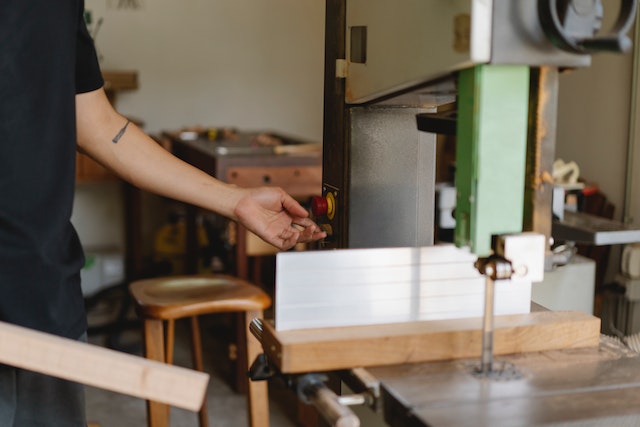
Let me tell you the good news! With a handheld reciprocating saw, you don’t just get one type of turn out when you start cutting. Man, you have a whole range of choices to choose from with this saw. Whether you’re cutting wood, metal, or even plastic, there’s something for everyone.
In terms of blades, you’ve got long blades with good reach for deep cuts and short blades for precision cuts. You can choose from blades that are curved, angled, or even quite thin. Blades come in a variety of sizes, thicknesses, and performances.
If you get bored of just cutting straight lines, don’t worry, that’s where accessories come in. You can get attachments like hole saws, sanders, jigsaws, and so much more. Talk about bang for your buck, one tool, many accessories—it doesn’t get better than that.
And if you prefer to keep your saw simple, no problem either. You can still get a variety of smaller attachments that don’t require any nuts, bolts, or dynamite. From sandpaper to polishing pads, there’s something to suit everyone.
So there you have it; a whole range of possibilities with your handheld reciprocating saw. From the the basic blades to the more complicated attachments, you’ve got plenty of choices. With a reciprocating saw, cutting has never been so much fun. Yeehaw!
Different Types of Blades
Ah, the many different types of blades that you can use with your handheld reciprocating saw. It’s like a box of chocolates – you never know what you’re gonna get! You’ve got all sorts of sizes and shapes, from tiny, delicate blades for finishing work, to those thick, long, and sturdy blades with specialized teeth for the toughest cutting jobs.
The first type of blade you want to look into is the standard blade. This is a straight, standard-sized blade with a universal fit, typically found with 6- and 8-inch sizes. This is the basic blade that you’ll use for most jobs, like cutting wood and metal, and it’s good for short, fast cuts.
Another popular blade is the demolition blade. This one is bigger and often has a more aggressive tooth pattern, meaning it works quicker and can cut through tougher materials. If you’re cutting through concrete or masonry, then you’ll want a demolition blade. But, keep in mind that these blades wear down more quickly, so you’ll need to replace them sooner.
You can also get blades specifically designed for metals, like pipe cutting blades. These are specially designed with diamond-shaped teeth and are ideal for cutting pipe, angle iron, and other heavy-duty metal materials. And if you need to cut through nails or screws, then a nail-eating blade will work great. It’s got an extended body and sharp teeth that can chew up even the toughest metals.
Now, if you’re doing some delicate work like fine woodworking, then you’ll want to get a finishing blade, which is designed to make smooth, delicate cuts with its fine teeth. And finally, there are special blades for plastics and fiberglass, featuring a hardened edge that’s perfect for cutting through those materials.
So, when you’re picking out a new blade, just think about the job you need to do and the material you’ll be cutting. That will help you decide what kind of blade you need to get the job done right. There’s no need to worry – with the right blade, you’ll be making perfect cuts in no time!
Accessories for Different Tasks
Aw yeah, check out these accessories! I don’t know about you, but every time I get myself a new tool, I feel like a kid with a new toy. There are a lot of accessories for a reciprocating saw that make it even more versatile for different projects.
There’s the blades. You can get blades for wood, metal, plastic, ceramic, and other materials. Most come in various sizes, giving the user more control and flexibility. Some even come with a specialized design that allows for easy cutting of objects in tight or hard to reach areas.
Batwing blades are great for cutting larger or thicker pieces of material. They have double-edged teeth that allow for faster, smoother cutting. The blades also have a longer surface area, meaning they create a wider cut when being pulled through the material.
You can also get curved blades that are designed to make simple and fast cuts in curves and circles. Some blades are even designed to be used underwater, which means you can use your reciprocating saw to cut in and around pools, ponds, and other wet environments.
Besides the blades, a reciprocating saw also has other accessories that adds value and convenience. For example, the handle makes it easy to use the saw in different orientations and angles; you can even get extended handles to reach deeper into tight areas or to get a better grip on the saw.
The footplate can also be adjusted for different angles, giving you more control and stability. You can also get a vacuums attachment that serves to collect the dust created by the saw, keeping your saw and the area neat and clean.
Finally, you can also do some cool stuff like add a light to your reciprocating saw for better illumination when you’re working in the dark or in tight areas.
The bottom line is that there are a range of accessories available for your reciprocating saw, making it more versatile and allowing you to do more on the job. The right accessory can make you look like a hero on the job, and I know you want that!
The Good and The Bad of the Reciprocating Saw
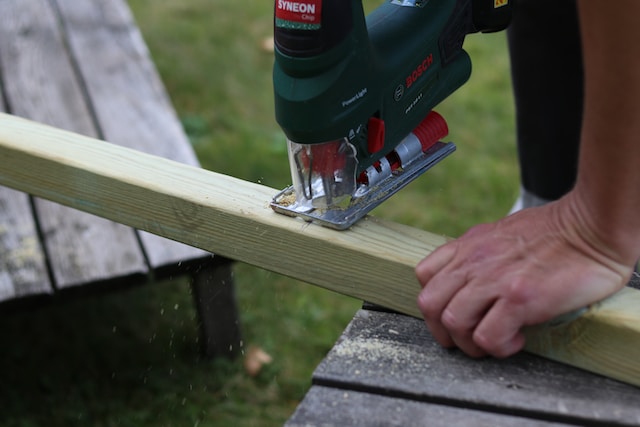
Why settle for a regular saw when you can have somethin’ fancy? Enter: the handheld reciprocating saw. It’s power and efficiency are second to none. Let me tell you about it:
When it comes to power, the reciprocating saw is a beast. It cuts through just about anything, from wood to metal and pretty much anything else. Think of it as the jack-of-all-trades when it comes to saws. Plus, you won’t need a ton of upper body strength to use it.
The versatility of the reciprocating saw makes it a great tool. You can use it for trimming, demolition, framing, and more. Plus, you can get different types of blades for different types of applications. And you can use different attachments to make the most out of the saw.
But with the good comes the bad. The reciprocating saw can be really loud and if you’re not careful, it can create a lot of vibration. This can be dangerous, so make sure you wear protective gear to reduce the risk of any injury.
Finally, keep in mind that the reciprocating saw looks like a toy and people, especially kids, might mistake it for one. So, if you have kids in the house, make sure to keep the tool in a safe and secure place.
That’s it! If you’re in the market for a powerful and efficient saw, then a handheld reciprocating saw might be just what you need. So, make sure to weigh the pros and cons carefully before you make a purchase.
Power and Efficiency
When it comes to power and efficiency, handheld reciprocating saws really can’t be beat. Not only do they have a razor-sharp cutting blade that can easily cut through virtually any material, they also boast a powerful motor that makes cutting effortless. Plus, the power of the saw provides an impressive amount of torque that can easily handle even the toughest of cutting jobs. Plus, their lightweight design makes them easy to maneuver and allows you to get into tight spaces where other saws simply can’t reach. So no matter what type of cutting job you have in mind, a handheld reciprocating saw is sure to make quick work of it.
Now, as is the case with any power tool, safety should always be your number one priority. Be sure to always use the proper personal protective equipment when making cuts and keep your fingers away from the blade at all times. Always keep the saw in good working order, too – if you’re having any doubts or concerns, bring it to a qualified repair shop to get it properly serviced.
But if you keep it serviced and use it safely, your handheld reciprocating saw will become one of your most reliable tools in your toolbox for all kinds of cutting jobs. The punchy power of the saw combined with its lightweight design will make it a valuable asset to have in any toolbox – and it’s sure to make your life a whole lot easier!
Limitations and Downsides
If you’re considering a handheld reciprocating saw, you should know that it’s not perfect. Though these tools can be incredibly useful and make many tasks easier, there are a few downsides and limitations you should be aware of.
For starters, these saws don’t provide the same power as say, a table saw or radial arm saw. This means that difficult or intricate cutting tasks may still require the use of a traditional saw. Like many smaller power tools, the handhelds also lack the ability to cut a wide variety of materials. And even if your machine does have the necessary power and can handle the material, it may not provide the precision you need.
Safety is another issue. Handheld reciprocating saws require very concentrated effort on the part of the user. If you’re not careful, you can end up damaging the material, or worse, hurting yourself. Even when using the correct technique, these tools can be incredibly dangerous. Wear protective gear, like closed-toe shoes and goggles, and always keep the saw away from your body and other people while in operation.
Finally, remember that these tools require regular maintenance and replacement parts such as blades and batteries. This can add to the overall cost as you’re forced to purchase these replacements in order to keep your saw running smoothly.
At the end of the day, the handheld reciprocating saw does have some limitations and downsides. Be sure you’re aware of them before you purchase your saw and process the task that you are going to do. If you’re careful, however, you can use a reciprocating saw for a variety of tasks and accomplish every task in an easy, safe and efficient manner.

